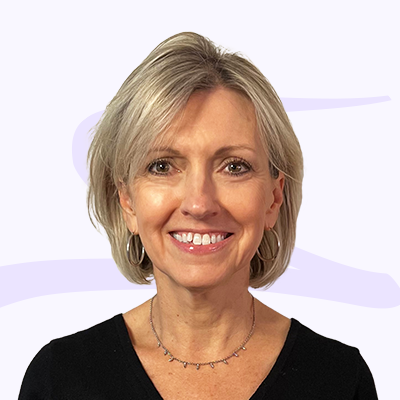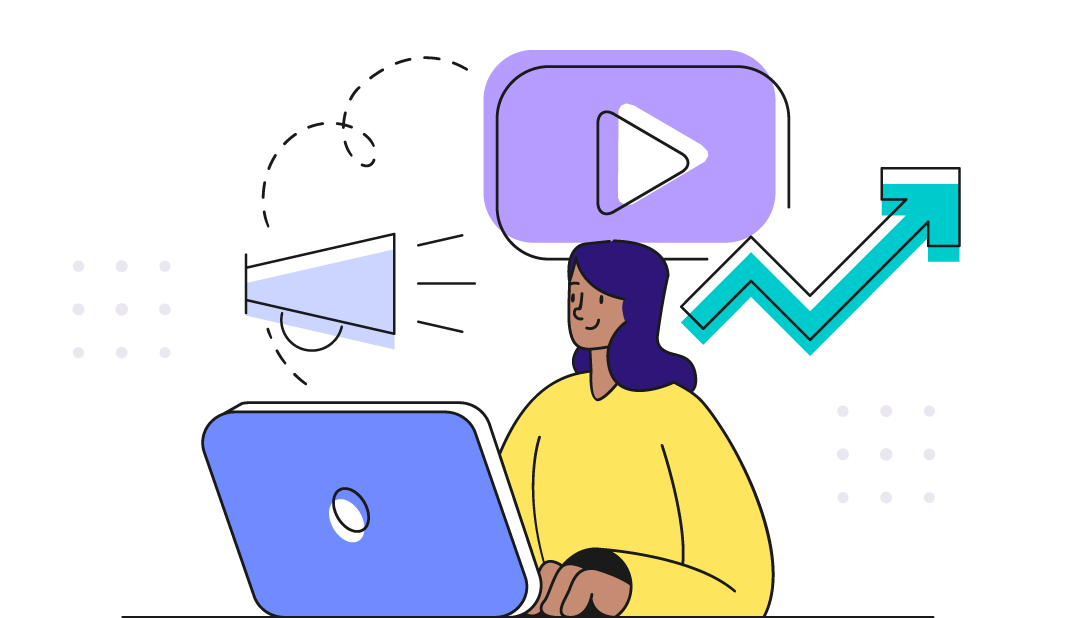



A product marketing plan for SaaS is pretty different from your standard marketing strategy. Whereas traditional marketing mainly focuses on the acquisition of new leads, SaaS marketers face a more challenging proposition — not only finding leads, but monetizing those leads, and most importantly, hanging onto them.
Wondering how to reach the right audience in a crowded market? We created this guide based on our industry experience guiding SaaS clients like you to success.
A solid SaaS product marketing plan needs to take the full customer journey into account, from awareness to conversion and beyond.
In this article, we’ll break down the steps that your business needs to go through to put together a marketing plan that will help your SaaS product stand out from the crowd.
To build a solid SaaS marketing strategy, you’ll save yourself both time and money by doing your homework first. You need to be crystal clear about who your product is aimed at (otherwise known as your buyer personas) and your USP (the Unique Selling Point for your product — key aspects that make it essential to your target market).
Enter the hero statement. Well-known by web copywriters as the hero message that heads up the homepage, hero statements can also be a great place to start when you’re putting together a product marketing plan. A hero statement is a single phrase that combines the Who and What — that is, the customer you serve, and the value you give them. An example of a hero statement for a personal finance SaaS product could be:
“[My SaaS company] is a hero to mothers in their 30s who struggle to stick to a tight budget.”
1. Web traffic
2. Email subscribers
3. Qualified leads
If you have enough traffic to your website, you’ll drive your number of email subscribers up. The more email subscribers you get, the more people you can convince to start a free trial — in other words, your number of sales qualified leads will start to increase. And, of course, the more qualified your leads are, the more conversions you’re likely to get.
In the interests of keeping things simple, we would add just one more key metric — churn. It’s vital to remember that in SaaS marketing, retaining customers is just as important as finding them in the first place.
So, now that you’ve identified who you’re selling to, why they should be interested, and how you will measure your results, you can put together a SaaS product marketing plan that should generate serious results.
The next step in your product marketing plan should be figuring out how to drive traffic to your website. There are many ways of doing this, but for SaaS products, one method stands out again and again — content marketing.
Defining your “content core”
For SaaS, content best practices involve understanding what makes up your content core. As Jordan Loftis of CoSchedule puts it,
“Your content core connects the dots between the value your business provides and what your audience cares about”.
In other words, your content core should address areas of interest to your target customers that also relate to your product’s value. Returning to our personal finance SaaS example, the content core would revolve around budgeting and financial planning.
Choosing your channels
Creating relevant, valuable content is a great way to attract leads to your website - but to get your content in front of your target customers, you’ll need to think of how to promote it. Will you publish it via social media? If so, which channels are most widely used by your customers? Will you create videos and upload them to YouTube? Would a podcast be more helpful? You may want to run some A/B tests to figure out which channels perform best for your market.
Gated Content
Of course, the main function of your content marketing plan should be to generate leads. One of the most effective ways of qualifying leads for SaaS is still email marketing — so building a substantial email list should be a priority. Gating content, also known as requiring prospects to provide an email address and other personal details in order to access premium content, can be highly successful for growing your subscriber base.
No SaaS product marketing plan would be complete without an SEO strategy. Start by defining your relevant keywords.
Platforms like Alexa’s Keyword Difficulty tool can help you figure out which keywords would work best for your product. Google Analytics should show you which keywords are being used to find your site already, and the keyword suggestions Google provides will illustrate other options you might want to consider.
Once you’ve established your keywords, update your website and content to make sure that you show up in search results. And don’t forget the more technical aspects of SEO — make sure your site loads quickly, is fully optimized for mobile, and includes sitemaps, correct canonical tags and proper navigation. For a free report on how well your website performs in terms of SEO, try Neil Patel’s free SEO analyzer tool.
Paid advertising can be a great way to acquire new leads from Day 1. Depending on your market, you might want to include strategies for Facebook or LinkedIn advertising, PPC or Google ads, or banner ads on industry websites.
Once you’ve captured your leads, you’ll also need a plan for how to convert them. In SaaS product marketing, this is a two-stage process — firstly, you will probably want them to download a free trial, and secondly, you need to transform them into fully “monetized” paying customers. Your product marketing plan should include exactly how you’re going to move people through your sales funnel. Here are a few techniques to consider:
Here’s where you get the benefit from all those emails you’ve been collecting with your gated content. Email marketing funnels can be a great way to build a relationship with a lead and persuade them to try out your free trial or connect with a sales rep. According to SaaS Marketer, “Email marketing needs to be at the center of all your business strategies. Even though some people think it is going obsolete, this could not be any further from the truth.” Their recommendations include using it to share industry news, send out onboarding emails or to share informative content like blog posts, feature product announcements and webinar invites, or important offers and discounts.
Driving visitors to sign up for a free trial should be a top priority for your SaaS website. It’s best practice to add banners with a clear call to action (CTA) encouraging sign-ups on every page of your website, including your blog posts. If you’re not sure if your website is really working for you, chat with us.
Once people have signed up for a free trial, make sure they have all the information they need to make a decision on moving on to a paid version. Case studies can be a great way of demonstrating social proof, helping users understand how other people have gained the most out of your software, and building trust with your leads. Tutorials can help users get past any hurdles during the trial and make sure they have a seamless experience using your product. Both should be included in your marketing plan.
As we’ve seen, one of the main differences with SaaS marketing is that retention is on the same level as acquisition. Your SaaS product marketing plan must therefore include a final step — considering how you’ll retain your customers, upsell and cross-sell other products, and make sure that you continue to delight them over the long haul. Here are a few of the best practice techniques you might want to consider adding to your plan:
Email isn’t only a method for converting leads into demo users — it can also be an excellent way to build a relationship with your customers. Canva uses this to great effect. They send appreciation emails to their customers, applauding their achievements using Canva, which has the dual benefit of creating a good feeling in their users and reminding them of the value they get from using Canva.
As Neil Patel points out, SaaS companies can only succeed if they offer both an exceptional software product and an equally excellent level of service. To retain your customers, you should consider customer support to be a part of your marketing plan. Make sure your support is easy to find, easy to use, and available across multiple channels, and create tutorials and FAQs that will make your customers’ lives easier.
If you’d like Spot On’s help with putting together a SaaS product marketing plan that attracts leads, drives conversions and increases sales, click here to set up a free 30-minute consultation call.


Rebecca Graves co-founded Spot On in 2012. As a partner and leader of client services, she takes immense pride in being in charge of “client happiness.” The role allows her to wield her problem-solving skills while fostering big-picture perspectives and team building. Rebecca’s more than 35 years of experience have equipped her to translate strategic planning expertise for the advancement of tech companies transforming the healthcare, financial, and legal industries.
Get the latest and greatest posts sent straight to your inbox.


